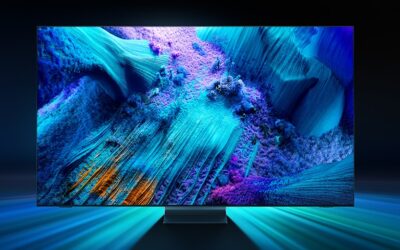— Brian Pereira
HP turbocharged networks with its FlexFabric architecture. The next objective was to solve the bandwidth limitation issue that users face when accessing networks from their devices. In this part of the story we reveal how HP Networking worked towards bringing the Fabric in the access area – to improve bandwidth for users.
We explained the Fabric concept in Part-1 of this story. In case you missed Part-1 you can read it here.
“We felt the work that we did with fabrics had to be extended to people, as user bandwidth demands are rapidly increasing,” said Santanu Ghose, Director – HP Networking Enterprise Group. “Typically every user today has three network connections: he connects his phone, his tab and his business PC.”
The nature of network traffic and the type of user applications also changed over the years. Today, users run video-based applications and use collaborative tools like Microsoft Skype over the network. That same network also carries business data from ERP and CRM systems, and from business databases.
HP Networking commissioned an intensive research to explore ways to solve the bandwidth problem. Some applications needed more bandwidth at certain times of the day, while others required less bandwidth. However, the network could allocate fix bandwidth for each application. It could not intelligently decide which applications needed more bandwidth and do bandwidth allocation, accordingly.
With new business applications like in-memory databases, virtualised desktops and analytics coming in, there was a strong need for a way to prioritize network bandwidth allocation at an application level.
“While we did lots of work on the systems side with FlexFabric and Virtual Connect, we are now bringing that concept through IRF and TRILL into the user experience zone, so that you can have extended bandwidth on demand”
— Santanu Ghose, Director – HP Networking Enterprise Group.
Weapons #2 & #3: IRF and TRILL
Researchers at HP came up with new technology to solve this problem: IRF (Intelligent Resilient Framework) and TRILL (Transparent Interconnection of Lots of Links).
The intelligence to drive both was SDN (Software Defined Network).
IRF is a software virtualization technology that interconnects all the switches in the organization to create a single fabric. A network switch is a device that interconnects all the network nodes and access devices (printers, PCs, wireless devices). It has connection points or ports.
Switches may be present in every department and on every floor of the office building. A mesh or Fabric is created by interconnecting all the switches, and this is enabled by IRF.
It took HP Networking 10 years to develop and refine IRF technology. IRF provides resilient connectivity while simplifying network management. With IRF, the network can recover quickly in the event of an outage. And this is crucial for today’s mission critical business environments. IRF also lowers costs because all the low-end network devices are aggregated into one high-end device. It also offers the promise of high reliability and high performance.
TRILL offers aggregation of lots of links, and also helps deliver better bandwidth to users.Link aggregation (TRILL) and fabric aggregation (IRF) deliver better bandwidth to users.
“While we did lots of work on the systems side with FlexFabric and Virtual Connect, we are now bringing that concept through IRF and TRILL into the user experience zone, so that you can have extended bandwidth on demand,” said Ghose.
SDN (Software Defined Network) is the intelligence in the network that decides how much bandwidth to provide for a particular application, based on workload demand. The physical capability is provided by IRF and TRILL.
Weapons #4 & #5: IMC and ClearPass
With the plethora of network tools being deployed, there was a need for a single window to manage it all through a single window or a common interface. Network administrators keep an eye on the performance of networks and systems in the data center, across the campus and also on all the users and devices accessing the network. The HP tool that provides single window access to all this is IMC or Intelligent Management Console.
“IMC cuts across all domains, across all technologies like routing or switching backbone or wireless. You can provision class of service and manage it all from this console,” informs Ghose.
Earlier this year, HP acquired a company called Aruba Networks. It will now integrate Aruba’s ClearPass tool, which does all the authentication, for wireless.
“IMC and ClearPass will make a very compelling strategy for the campus,” said Ghose.
Weapon #6: EVI
As cloud computing gained more prominence, organizations began to extend their IT infrastructure to data centers located elsewhere. Infrastructure was now being integrated with that of service providers and ecosystem partners. And organizations took to hybrid cloud infrastructure, with some parts of the IT assets residing on private clouds and the rest on public clouds like Amazon Web Services. So workloads and Virtual Machines had to be quickly moved between data centers. And a network virtualization technology was needed to do this. That’s where HP’s EVI or Ethernet Virtual Interconnect came in.
Bandwidth was always the limitation for moving workloads quickly across an extensive network that could span across countries or even continents. But EVI and IRF have got round this limitation.
HP claims that its IRF also facilitates the movement of VMs by 30 percent, because it is doing link aggregation.
In the third and final part of this story, we talk about HP Networking’s strategy for attaining leadership, and discuss some more ‘N-weapons’. Stay tuned.








